So you know the basics: keep vowels and consonants, don’t keep duplicate letters, and keep letters that go together. Understanding this basic information can take you far.
However, if you want to truly master leave, you have to learn more than basic rules: you have to truly understand leave on an entirely different level past these basic rules. Below is an introduction to some of the more advanced leave concepts that are important in Words with Friends:
Fishing
Fishing is playing off one or two tiles in hopes of a very high scoring play next turn: usually a bingo. This concept is highly overused especially in Words with Friends, as short plays don’t typically yield a high enough score and you won’t draw a high enough score often enough next turn. However, there are a few exceptions, particularly with extremely high scoring situations that won’t be blocked, or particular combinations that result with an often very often.
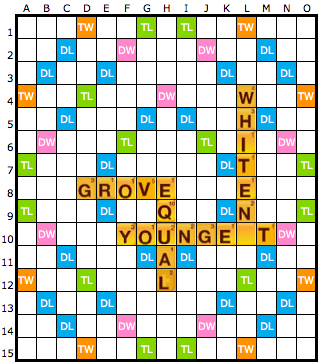
![]()
In this position, it would be worthwhile to play the J off for 9 points, allowing you to play a high point bingo through the G if you draw any vowel. While your opponent could block this bingo, it is very unlikely since there is no indication from your opponent’s perspective that the G is especially dangerous, and plays that block the G tend to score quite poorly.
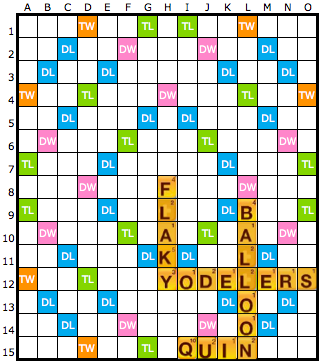
![]()
By playing PIGS, you allow yourself 3 chances to draw an E and play MANNEQUIN next turn for 87 points. This is an especially good since it follows the two most important criteria for fishing: it’s hard to block, and it’s somewhat hard to detect, even though PIGS only scores 17 points.
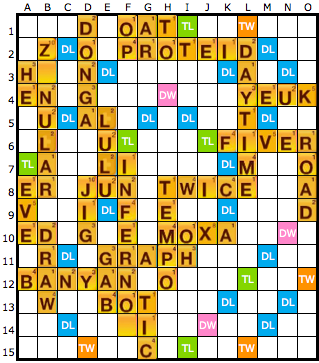
![]() Score: 393-332
Score: 393-332
Pool: ![]()
In this position, you’re significantly behind, and worse yet, have little recourse to come from behind. There is an open C, but your opponent is likely to take that opening (possibly for a bingo) and if not will almost certainly block, and it is very hard for you to create an opening that scores enough for you to win the game. In these sorts of situations, fishing plays are often your only hope. Here, you should fish the I, hoping to draw the Q for QUIETNESS, or possibly the H for SITHENS/CHINTSES. Without hitting an extremely lucky tile, you won’t be able to win this game.
Leave adjustment
Many players prefer a simple notion of leave: i.e. S is a good tile, G is a bad tile, etc. These notions are far too simplistic: there are certain situations when certain tiles are significantly better than normal. This happens especially with uneven pool distributions, salient hooks that have the ability to affect your score, or certain openings that are more conducive to specific tiles.
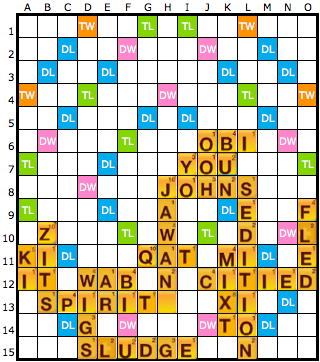 Score: 242-211
Score: 242-211
![]()
At this score, you want to preserve your lead so you’re opponent cannot come back from the deficit. Normally, a tile such as the V is terrible, and you’ve want to get rid of it while blocking the board, making a play such as VAGUE n5. However, in this position the V is a good tile since it allows you to block the board further. Thus, FUDGE at n5 is actually preferably to VAGUE, even though DF is normally a better leave than AV.
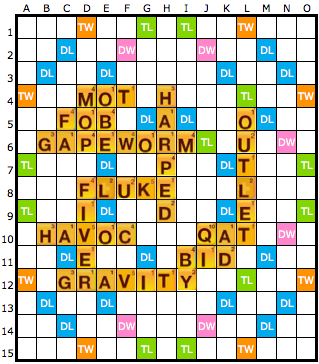
![]()
Given normal leave values, you’d rather take the extra points by making a play like ORZOS over GROWS, since it scores 10 more points. However, in this position the Z is even more powerful than usual, because of the 12k Z hook, the possibility of ZOUK at g5, and ZA at 9a. Because of this, the ZO leave is easily worth over 10 points more than the GW leave after ORZOS.
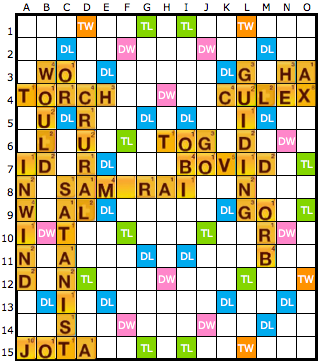
![]()
In this position, all of your best scoring options are at 2c. While FAVA or FAZE would normally be the best points/leave combination, in this case the best play is actually FAVE because of the pool and spots on the board. As you can see, there has only been 1 E played, while the vast majority of As remain, leaving you with a high risk of duplication after FAVA, while getting rid of your A, which could be very useful in many spots on this board such as 11k.
Opening Play
Finally, I would be negligent if I did not mention the opening and early stages of Words with Friends. The beginning of a Words with Friends game has special properties that do not exist in most other scenarios, since it is so much more difficult to score points given the lack of bonus square options.
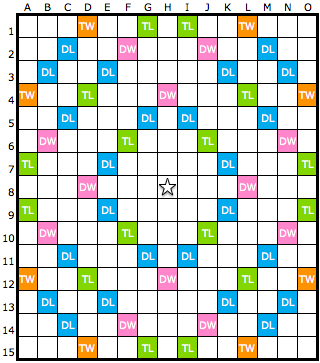
![]()
Here, you are actually best off exchanging the O, trying to draw a bingo. Since all of your options score poorly and give your opponent decent scoring potential with parallel plays, exchanging gives you your best chance at establishing an early lead.
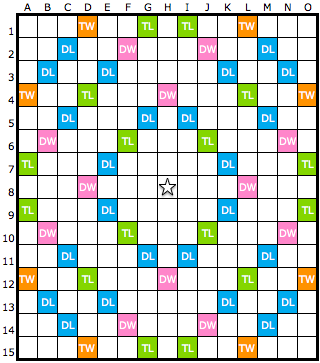
![]()
While you could consider playing PLUGS or GULPS for 24 points, another option you can strongly consider with this rack is playing PLUG for 11, just short of the DW square, likely giving you a very high scoring play next turn. The odds are strongly against your opponent having an S, and their blocking options are extremely weak, making this type of play potentially lucrative and worth the sacrifice in points.
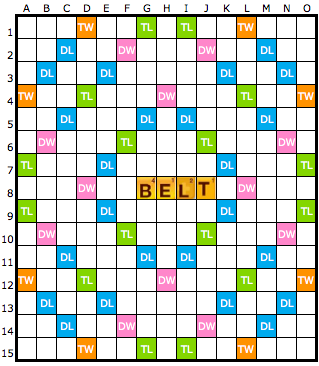
![]()
As is often the case, here there are no great scoring options. Here, the best option is the somewhat limited WEB h7 for 9 points. This play will sometimes net you a 40 point play with QIS next turn, but also limits your opponent’s scoring ability, starting a cat-and-mouse gambit game that is common early on in Words with Friends.
